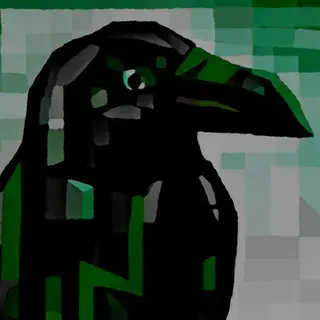My phone also screams (signals) when someone calls, must mean my phone feels pain I guess.
For me the question is if plants can actually hear these distress sounds, otherwise it’s not really for communication.
They probably do. But even if not, it can be used for communication with insects and other animals.
so popping is the new screaming
Remember that Mythbusters (Episode 61 Deadly Straw) that re-created Cleve Backster’s primary perception experiments to show plants can sense malicious intent and totally re-created his results? I had to re-watch it to make sure I was remembering correctly. They totally just alter the experiment until they break it, then sweep it under the rug and call it busted. Totally.
So it’s been years since I’ve seen it, but I do remember that episode. I went through the wiki a bit and read up on some of Backster’s experiments and how they were received by the scientific community… not great. It is a very intriguing subject, but I think it gets anthropomorphized pretty bad. Even the title here, “plants do scream” almost implies consciousness. I do think there are mechanisms that plants may have evolved that we don’t fully understand. Like holding onto water or nutrients if there are more plant clicks (screams) happening nearby. But we have to be scientific about this. In the article, they talk about possible sources of the clicks possibly being air bubbles escaping the plant. Jumping to some of the conclusions that were explored in the past like “plants have ESP” are tall claims. Extraordinary claims require extraordinary evidence. Claims like that were never reproducible, so we shouldn’t believe them. I think plants are amazing, and we should keep studying stuff like this, but best to stay realistic and phrase these findings appropriately. Just my two cents.
2/3 of crop calories go to humans
Source?
The paper is from 2013. The number of animals in factory farming were ramped up since then.
Then: She says crops not crop calories.
“From the 41 crops analyzed in this study, 9.46 × 1015 calories available in plant form are produced by crops globally, of which 55% directly feed humans. However, 36% of these produced calories go to animal feed, of which 89% is lost, such that only 4% of crop-produced calories are available to humans in the form of animal products. Another 9% of crop-produced calories are used for industrial uses and biofuels[…]”
55% + 9% = 64% = 2/3
So you’re correct with the 2/3 crop calories(!) if we count the 9% biofuel/industrial stuff with it.
But why is the following?
“According to a 2011 analysis, 75% of all agricultural land (including crop and pasture land) is dedicated to animal production.”
I’d suppose it’s because of this reasons: A. Pastures need a lot of space which for which often woods or rainforest are burned and biomes are destroyed. B. Probably the most eaten vegetable (potatoe) is very energy dense and has a lot less waste by-product and therefore needs a lot less space than animal feed like soy, wheat or corn.
This is everything I need to know from your paper to say that the system of animal agriculture is fucked, wasteful and destroys nature and our health (not only because of the pandemics it causes):
“Put another way, shifting the crops used for feed and other uses towards direct human food consumption could increase calories in the food system by 3.89 × 1015 calories, from 5.57 × 1015 to 9.46 × 1015 calories, or a ∼70% increase. A quadrillion (1 × 1015) food calories is enough to feed just over 1 billion people a 2700 calories per day diet for a year (which is 985 500 calories per year) [1]. Therefore, shifting the crop calories used for feed and other uses to direct human consumption could potentially feed an additional ∼4 billion people.”
Pastures can be regenerated, btw: https://www.reddit.com/r/farming/comments/1ds3fvh/how_to_turn_pasture_into_a_garden/
Edit: The latter is what the “Vegan Land Movement” is doing very successfully by rewilding pastures to wild lands again where a wide variety of wild life is finding a refugium now.
what I’m reading is that I’m right, and you would like to shift the discussion to land use
Nope. I’m not shifting anything. You were by changing the subject from crops to crop calories without taking into account humans can grow calorie dense foods on relatively small space opposed to animal feed which needs a lot crops, land and produces a lot of plant waste and in addition is inefficient because only a fraction of calories come out of the slaughtered being compared to the initial calories in plants.
All that while we cull millions of feeling beings in the worst possible way right now because of H5N1 (add that to the polycrisis) waste enormous amounts of resources for little protein and calories and destroy nature.
Here have a look at some frail vegans, while the world burns, mate:
the same crops that feed animals feed people. they eat fodder and industrial waste from the same fields that produce food that people eat. it’s a conservation of resources.
Delicious screams. With butter.
Hasn’t this study been done before? Feel like I’ve heard of grass “distress signals” from years back
Yes, remember that one as well, but this is a literal sound, not only a “plants communicate stress in some way” (if I remember the previous research correctly).
Nah, the pops and clicks are just plant language for, “I give my consent to be your food. Namaste.”
I hear the screams of the vegetables (scream, scream, scream)
Watching their skins being peeled (having their insides revealed)
Grated and steamed with no mercy (burning off calories)
How do you think that feels? (bet it hurts really bad)
Carrot juice constitutes murder (V8’s genocide)
Greenhouses prisons for slaves (let my vegetables grow)
We have to stop all this gardening (it’s dirty as hell)
Let’s call a spade a spade (a spade is a spade is a spade is a spade is a…)
Salads are only for murders! Cole slaw’s a fascist regime!
Omg I had completely forgotten about this!
Well, sort of. Not in the same way you or I might scream. Rather, they emit popping or clicking noises in ultrasonic frequencies.
Another “science” community with clickbaity bullshit.
Eh… What? It’s an interesting article. The screaming is in quotation marks. So as far as I’m concerned, the title is fine.
I remember this mythbusters episode. They basically detected that plants “might “ scream or signal to other plants. They got some weird outliers too.
You misremember it a bit. They saw “activity” when the thing was connected to the plant. Then they moved the plant into a steel container and the readings stopped. They hypothesized that they detected something like vibrations from a busy street etc, not a plant “screaming”.
It’s been years since I’ve seen it, so yeah that’s probably right
Mythbusters episodes are all over YouTube free for everyone. Just a little FYI in case you feel nostalgic
Mowing my lawn must be a fucking nightmare for everything involved. ☹️
You know why freshly mown grass smells so nice?
The smell is the plant’s defense against grazing animals, as it attracts predators.Wait till you hear about grazing.
Imagine if instead of a podcast or audiobook or symphonic power metal you had to listen to the screams of your lawn as you mowed its life short
It gets worse – that doesn’t kill the grass. It just mutilates it.
and you get to do it over and over again every time it grows back!
grass is the Ken Kaneki to my lawnmowers Jason lol
That’s what the fresh cut grass smell is.
Grass Metal!

If this is interesting to you, you may also be interested to check out the book The Light Eaters by Zoe Schlanger
Is it about people eating light?
Talk about fast food
By contrast, stressed plants are much noisier, emitting an average up to around 40 clicks per hour depending on the species. And plants deprived of water have a noticeable sound profile. They start clicking more before they show visible signs of dehydrating, escalating as the plant grows more parched, before subsiding as the plant withers away.
someone smarter than me should get to inventing a device that listens to plant clicks and tells you when it needs water
That idea is mentioned in the article, yes.
Edit: apologies. The OP has already pointed this out.
Might be a good use-case to have your home irrigation system be triggered by plant clicks instead of a schedule.
It could be. Although we don’t know how much those sounds indicate distress, and perhaps watering should happen much sooner.
Imagine if aliens abduct you and give you food only when your stomach makes the kind of noise it makes after three days without eating anything, because “that’s all they can detect.”
Well hence they will work out when the plant (or human in your example) is really starving.
We’ve already established that. But that method will shorten the life of the plant (and human.)
I dunno, calorie restrictions has tended to lengthen lifespan in other organisms we’ve tried it on.
Sure, but not to the point in which it’s a constant stress.
That’s actually mentioned as one possible use case further down the article!













